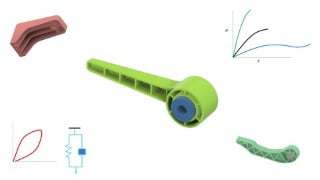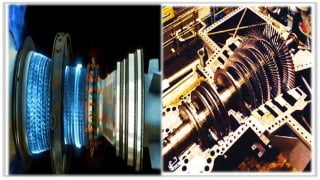Basics of Plastics design for design engineers
Learn the fundamentals of designing with plastics in this comprehensive course. Discover the different types of plastics, their mechanical behavior, and the importance of data and tests in the design process. Gain insights into reinforced plastics, material selection, and dimensional stability. Perfect for design engineers and engineering students looking to enhance their understanding of plastic materials.
What you’ll learn
- What are different types of plastics and why they are useful
- Mechanical behaviour of plastics
- Creep phenomona and visco elastic behaviour
- Plastics in Fatigue, Impact and hardness property
- What are Reinforced plastics
- Design process, parameters and factors to consider
Plastics as a family of materials have been exceedingly used for product design .
Designing with the plastic materials is generally not so straightforward as steels and aluminum. Due to the dependency of material properties on various factors.
This course is an attempt to collate the important considerations when designing with plastic materials.
Topics covered:
1. What are polymers and plastics
2. Difference between thermo plastics and Thermosets
3. Difference between amorphous and crystalline types
4. The advantages and disadvantages of using plastics for design
5. Importance of data and tests – Design approach
6. Mechanical behaviour – Stress strain diagram
7. Flexibility, rigidity, Ductile vs brittle behaviour, Linear and Non linear behaviour
8. Yield point and Elongation
9. Glass transition temperature and its importance
10. Visco elastic behaviour – Models
11. Phenomenon of Creep and how it takes place
12. Creep rupture definition
13. Behaviur in Fatigue and Fracture toughness compared to steel
14. Impact toughness and which plastics are superior compared to others?
15. Hardness property and its measurement , importance
16. Abrasion and Friction properties . Plastics which are good selection for anti friction applications
17. What are re-inforced plastics. Their impact and Anisotropy
18. Designing plastics within the larger Design process. Steps to consider, checks to include.
19. Material selection guide and factors to consider when selecting apt material
20. Dimensional stability, tolerances
21. Design for Injection molding
This course is designed to aid Design engineers in the Plastics product design activity. To go beyond CAD skills and develop holistic fundamental understanding of behaviour of plastics . Helping to make better material decisions and design decisions.
Who this course is for:
- Design engineers who want to design with plastics with confidence understanding fundamentals
- Engineering students
User Reviews
Be the first to review “Basics of Plastics design for design engineers”
You must be logged in to post a review.







There are no reviews yet.